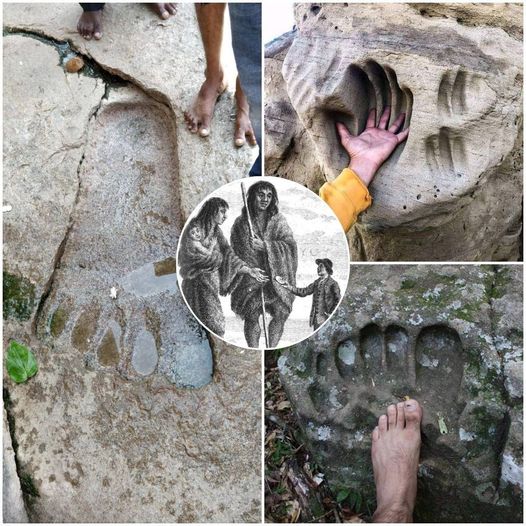In the heart of India, a discovery has rekindled interest in a civilization that thrived over 5,000 years ago, casting long shadows over our understanding of ancient human history. The mysterious footprints and symbols, etched into the very earth that once nurtured this enigmatic society, serve as silent witnesses to their existence and way of life. This exploration into India’s ancient past uncovers more than just the physical remnants of forgotten lives; it offers a tantalizing glimpse into the cultural, technological, and social intricacies of a lost civilization that once flourished on this subcontinent.

The discovery of these ancient footprints has sparked a renewed interest in the archaeological and historical significance of India’s early inhabitants. Scholars and enthusiasts alike are drawn to these marks, not just for their physical form but for the stories they tell about the people who left them behind. These footprints, alongside the symbols that accompany them, are believed to be over 5,000 years old, predating many known civilizations of the era. Their preservation and the sophistication evident in their creation suggest a society that was deeply connected to its environment, spiritually and practically.
India, with its rich tapestry of history, has always been a treasure trove for those interested in the dawn of civilization. The recent findings underscore the region’s importance as a cradle of early human culture and innovation. The footprints and symbols, found etched in areas that were likely significant for social or religious gatherings, offer clues to the daily lives, beliefs, and social structures of this ancient society. These markers are not mere relics; they are a bridge to understanding the complex narrative of human progress on the Indian subcontinent.

The implications of these discoveries extend far beyond the borders of India. They challenge established timelines and theories about the spread of human civilization and the interconnectedness of ancient societies. The sophistication and age of the footprints and symbols suggest that this civilization was not isolated but part of a larger network of human settlements that spanned the globe. This revelation opens new avenues for research and collaboration among historians, archaeologists, and scientists, aiming to piece together the vast jigsaw puzzle of human history.
As we delve deeper into the secrets of these ancient footprints, we are reminded of the enduring nature of human curiosity and our unending quest to understand our origins. The lost civilization of India, with its mysterious footprints and symbols, serves as a poignant reminder of the complexities and interconnectedness of human history. It challenges us to look beyond the surface and explore the depths of our past, in the hope of uncovering the full story of humanity’s journey on Earth.

This journey into India’s ancient past is not just an academic pursuit; it is a call to recognize the significance of preserving our global heritage. As we uncover more about this lost civilization, we are given the opportunity to reflect on our own place in the continuum of history. The mysterious footprints of India’s ancient inhabitants encourage us to consider what legacies we wish to leave behind for future generations to discover.
